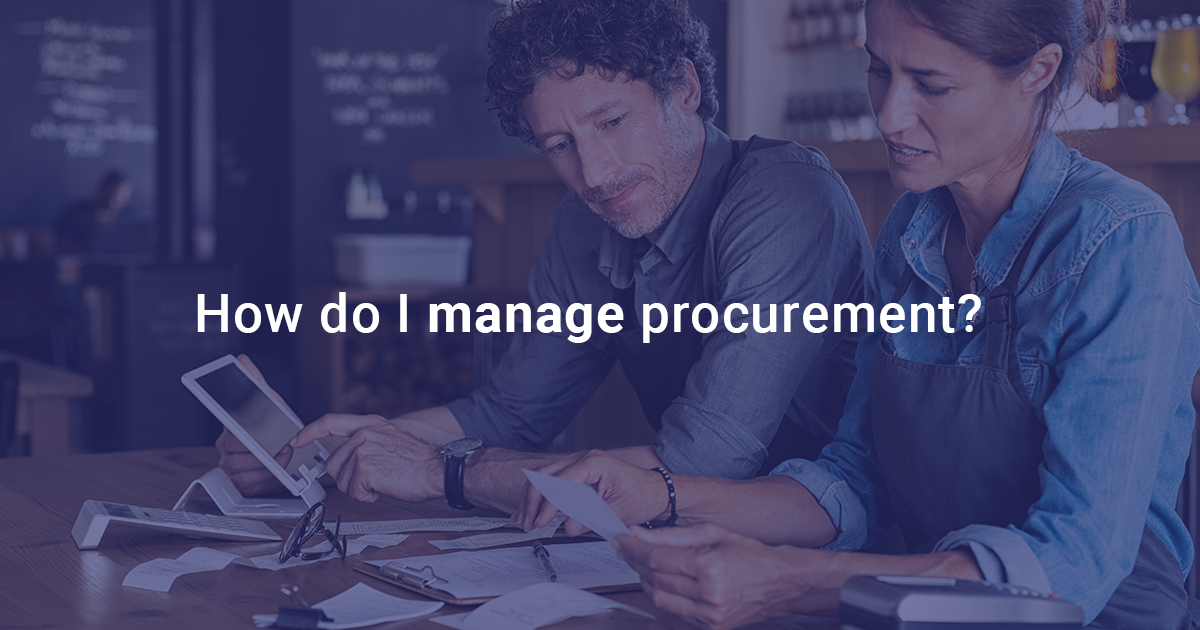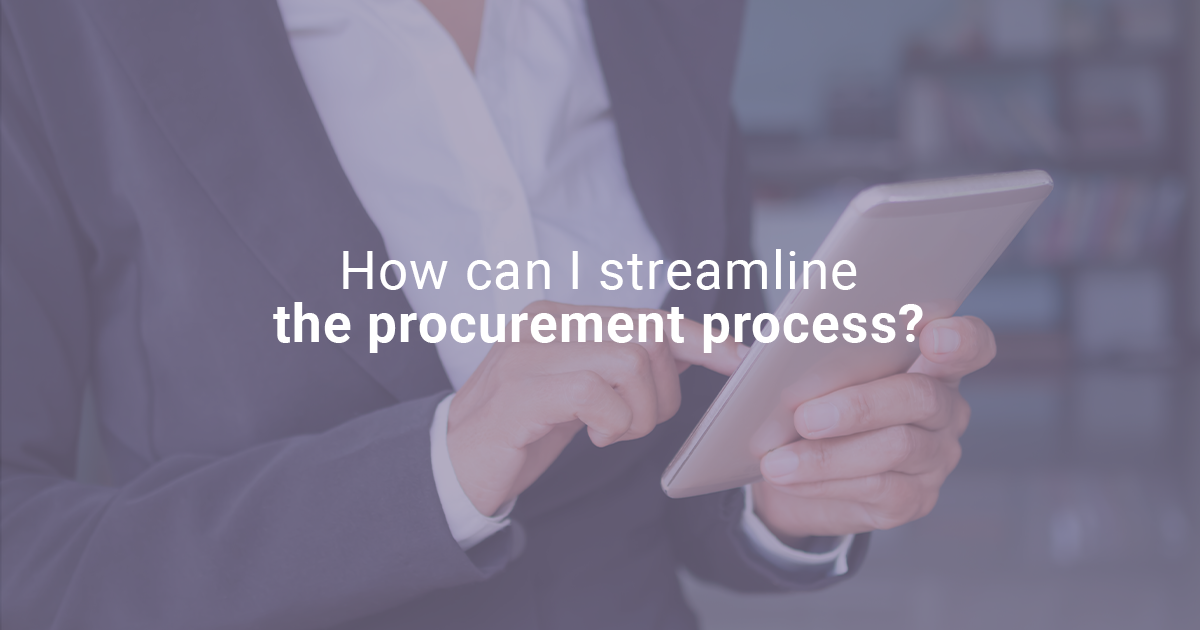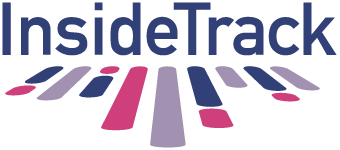As a foodservice operator, you’re no stranger to the hurdles of procurement.
With 77% of operators saying their restaurant experienced supply delays or shortages of food or beverage items in 2023, the need for supply chain and procurement technology has never been more vital.
The question is: how does a foodservice operator navigate the complexities of procurement efficiently?
As market trends shift, consumer preferences change, and competition intensifies, you’re probably on this blog seeking innovative solutions to stay ahead of the curve.
In case you’re a newbie here, let’s breakdown the 411 on foodservice procurement.
What is foodservice procurement?
Foodservice procurement refers to the process of acquiring and sourcing food and related products for businesses in the foodservice industry. It plays a pivotal role in managing and optimizing the supply chain and involves selecting and negotiating with suppliers, determining product specifications, placing orders, managing inventory, and ensuring quality and compliance.
Effective procurement practices directly influence the efficiency, reliability, and cost-effectiveness of your supply chain.
By procuring the right products, in the right quantities, at the right time, and from reliable suppliers, foodservice operators can ensure a smooth flow of goods throughout the supply chain.
Here are key steps in foodservice procurement:
- Supplier Selection: Identifying and evaluating potential suppliers based on factors such as product quality, pricing, reliability, reputation, and sustainability practices.
- Negotiation and Contracting: Engaging in negotiations with suppliers to establish favorable pricing, terms, and conditions, and formalizing agreements through contracts.
- Order Placement: Placing orders for food and supplies based on demand forecasts, menu planning, and inventory levels.
- Inventory Management: Monitoring and managing inventory levels to ensure optimal stock levels, minimize waste, and avoid shortages or excesses.
- Quality Assurance: Implementing procedures and inspections to ensure the quality, safety, and compliance of procured products with regulatory standards and customer expectations.
- Cost Control: Analyzing and controlling costs associated with procurement, including price comparisons, volume discounts, and effective budget management.
- Sustainability and Ethical Sourcing: Considering environmental and social factors in procurement decisions, such as sourcing locally, supporting fair trade practices, and minimizing packaging waste.
- Supplier Relationship Management: Building and maintaining strong relationships with strategic suppliers through effective communication, collaboration, and feedback mechanisms.
By employing efficient foodservice procurement practices, businesses can optimize their supply chain, reduce costs, maintain consistent product quality, mitigate risks, and ultimately deliver exceptional dining experiences to their customers.

Managing food procurement involves implementing effective strategies and practices to ensure a smooth and efficient procurement process.
Here are 10 best practices for procurement management:
- Identify Your Needs: Determine the specific food, ingredients, equipment, supplies, and services required for your foodservice operation. Consider factors such as menu offerings, customer preferences, quality standards, and regulatory requirements.
- Establish Product Specifications: Clearly define the quality, quantity, and any specific requirements for each item you procure. This helps ensure consistency and helps in evaluating potential suppliers.
- Research and Select Suppliers: Conduct research to identify potential suppliers who can meet your procurement needs. Consider factors such as product quality, pricing, reliability, reputation, sustainability practices, and customer reviews. Request samples, visit supplier facilities if possible, and gather as much information as you can to make informed decisions.
- Negotiate Favorable Terms: Engage in negotiations with selected suppliers to establish favorable pricing, payment terms, delivery schedules, and any additional terms and conditions. Consider factors such as volume discounts, minimum order quantities, and long-term contracts to secure the best possible deals.
- Maintain Supplier Relationships: Cultivate strong relationships with your suppliers. Regularly communicate with them to address any concerns, discuss product availability, and stay updated on industry trends. Building a good rapport can lead to better collaboration, preferential treatment, and improved response times.
- Monitor and Manage Inventory: Implement an inventory management software to track stock levels, monitor product expiration dates, and avoid shortages or excesses. Regularly review inventory reports, adjust ordering quantities based on demand patterns, and establish efficient reordering processes to ensure that you have the right products at the right time.
- Ensure Quality and Compliance: Establish quality assurance protocols to ensure that the procured products meet your specifications and comply with regulatory standards. Conduct regular inspections, perform product testing, and maintain proper documentation to track the quality and safety of your supplies.
- Evaluate and Optimize: Continuously evaluate your procurement management processes to identify areas for improvement. Analyze data on pricing, supplier performance, and customer feedback to optimize procurement decisions. Consider implementing technology solutions such as procurement software or electronic ordering systems to streamline processes and improve efficiency.
- Foster Sustainability: Integrate sustainability practices into your procurement process by sourcing locally, supporting eco-friendly packaging, and prioritizing suppliers with sustainable and ethical practices. This can help reduce your environmental footprint and align with customer preferences for sustainable businesses.
- Stay Informed and Adapt: Stay updated on industry trends, new products, and emerging suppliers. Regularly assess your procurement strategies to adapt to changing market conditions and customer demands. Attend trade shows, participate in industry forums, and network with other foodservice professionals to stay ahead of the curve.
By following these steps and consistently reviewing and refining your procurement practices, you can effectively manage foodservice procurement and contribute to the success of your foodservice operation.

We know… those 10 best practices we mentioned above are time consuming.
Enter InsideTrack sourcing and procurement technology.
Offering a comprehensive tech stack to streamline and optimize the procurement process, our technology can help you automate tasks to increase efficiency, reduce errors, and ultimately save valuable time and resources.
By leveraging InsideTrack procurement technology, you can achieve greater efficiency, cost control, accuracy, and compliance.
Benefits of Integrating Technology Into Your Procurement Process
- Efficiency and Time Savings: Automate tasks, reduce manual work, free staff for other areas.
- Accuracy and Reduced Errors: Minimize errors with data entry, calculations, and inventory tracking.
- Cost Control and Savings: Compare prices, negotiate better deals, optimize inventory to reduce waste.
- Improved Supplier Management: Facilitate communication and collaboration with suppliers.
- Data Analytics: Gain valuable insights to optimize procurement strategies and control costs.
- Inventory Management: Ensure optimal inventory levels, minimize waste, improve efficiency.
- Compliance and Food Safety: Maintain compliance with food safety and regulatory standards.
- Sustainability and Transparency: Support sustainability initiatives and align with consumer demands.

Revealing what’s driving your procurement success is impossible without visibility into those factors.
InsideTrack supply chain technology gives you that visibility and revolutionizes how operators streamline their foodservice procurement.
By leveraging technology, foodservice stakeholders can embrace the future of foodservice procurement and supply chain management.
InsideTrack collects, cleans, and standardizes your procurement data from dozens of sources.
Transform your procurement team with the most complete and comprehensive suite of foodservice procurement tools in industry. With InsideTrack, you can streamline processes and leverage customized features such as:
Optimizing procurement is no longer a choice, it’s a necessity.
InsideTrack empowers you to take control of your procurement with a comprehensive approach that streamlines processes, unlocks cost savings, and ensures compliance.
Don’t wait to improve your supply chain management – contact InsideTrack today and learn about our innovative procurement technology.



